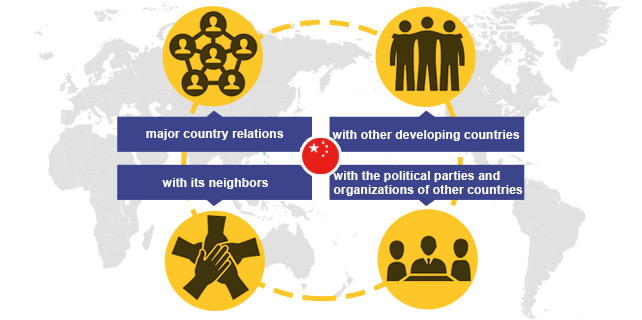Tibet gains from Belt and Road Initiative
LHASA - October's recent national holiday proved a good week for Dibu, a Nepalese merchant in Burang, a Tibetan county sharing 400 kilometers of border with Nepal and India.
As the third generation in his family to do business in Burang, the only port of entry for foreign trade in Ngari Prefecture, Dibu has worked in the family business since he was 19 years old. Now, he is 54.
Winter is coming, and Dibu is busy purchasing goods before heavy snow cuts off the mountain road back to his home. The Chinese commodities should help him make a fortune by the end of the year.
"We can make 300,000 to 400,000 yuan ($45,230 to $60,307) a year, far more than what we can earn in Nepal," he said.
The per capita gross national income in Nepal was $730 last year, according to the World Bank data.
"Burang port is getting more prosperous as China promotes the Belt and Road Initiative. I am sure our business will continue to grow in the future," Dibu said.
Tibet, which is seeking a bigger role in the Belt and Road Initiative, has seen its economic growth on the fast track despite a slowing national economy in recent years.
Tibet's GDP has been one of the best performing in China over the past three years, with this year's half-year GDP growth reaching 10.8 percent, underpinned by strong investment in infrastructure and robust consumption, according to the region's statistics bureau.
Tibet Customs said the region's foreign trade rose 22.1 percent year-on-year to 4.7 billion yuan in the first three quarters.
General trade surpassed petty trade to become Tibet's main foreign trade this year. In the first three quarters, imports and exports of general trade soared by 80.5 percent to hit 3 billion yuan, taking up 63.4 percent of Tibet's total foreign trade.
The fast growth in foreign trade benefited from a better business environment, infrastructure and trade policies, according to Yin Weifeng from Tibet Customs.
Reforms in customs procedures are being carried out to push forward the building of an economic belt in the Himalayan region and Bangladesh-China-India-Myanmar Economic Corridor. A China-Nepal cross-border economic cooperation zone is also being created.
The Belt and Road Initiative has opened more opportunities for the border region. China is aiding Nepal in a series of infrastructure projects including roads, power grids, bridges and industrial parks, all of which will become important channels to strengthen China-South Asia trade, where Tibet is an important gateway.
Tibetan enterprises are taking advantage of these opportunities to enter the overseas market.
In September last year, Libo Construction, along with several domestic companies, jointly undertook construction of a high voltage power line project in Ethiopia, becoming the first private enterprise in Tibet to enter Africa.
"All our achievement should be attributed to the Belt and Road Initiative, which gave domestic companies the confidence to walk out," said Tang Guozhong, chairman of Libo Construction.
Gaining confidence from Libo's success, 10 companies in Tibet have stepped into the overseas market, and many more are willing to follow suit.
 |
|
A Nepalese merchant promotes wooden bracelets to a Chinese visitor in Gyirong, a port of entry for foreign trade in Shigatse city, the Tibet autonomous region. HU JUNHAO / XINHUA |
- Belt and Road Initiative mirrors China's bigger role: scholar
- US specialist lauds China's great achievements, expects better policies
- China's Belt and Road Initiative could better foster economic integration: Chinese official
- China's 10 key solutions to boost economic growth between 2012-17
- Trade through China-Nepal port grows in Q1









